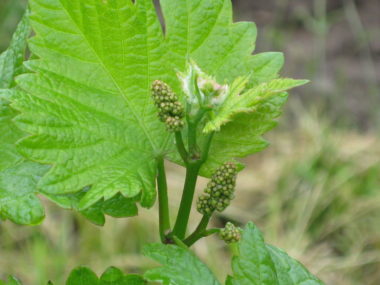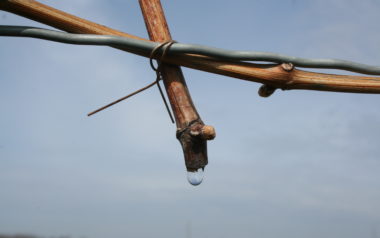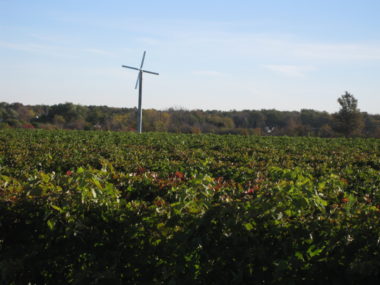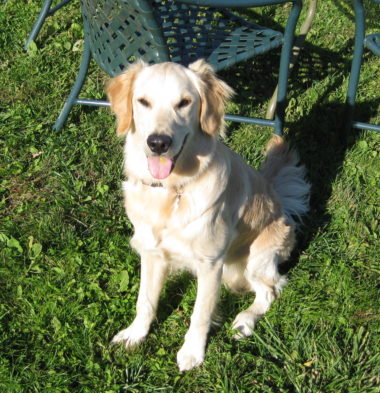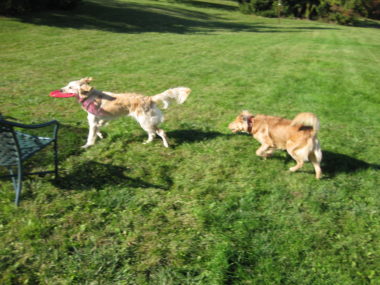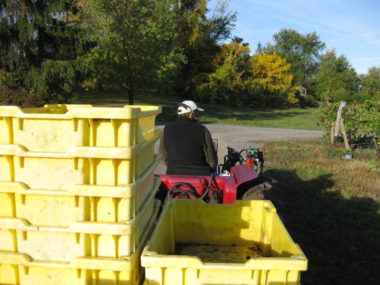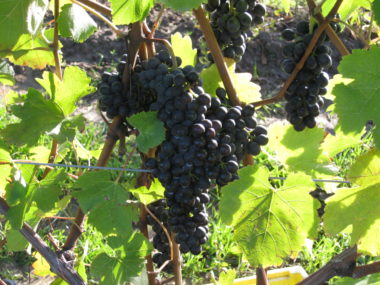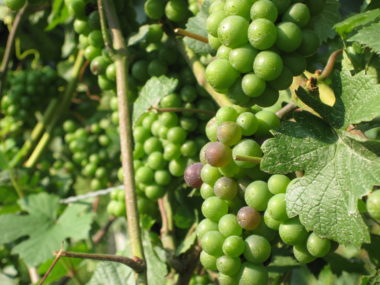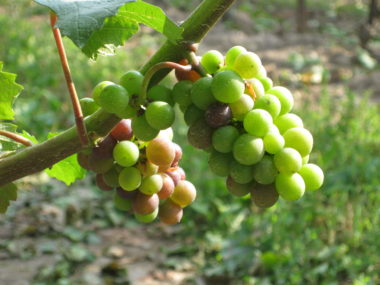Where do the days go?
Every year, right around this time, I shift from basking in the joys of summer to flat out panic. Days are spent trying to motor through jobs in the vineyard, but soon the stark reality sinks in. There just aren’t enough days left before harvest to complete the monster list of tasks.
I find myself in a row of Pinot Gris on this hot Sunday, trying to rationalize how I seem to get into this mess every year, yet somehow manage to get most of the work done. This brings no comfort. The vines just keep growing (even on weekends). There is minor satisfaction in each row of thinning and shoot positioning that I get through, but no time to really enjoy it. I seem to remember more enjoyment in years past. Perhaps this is tied to the fact we now have a winery occupying a large portion of our time. As the sun beats down and I feel the sting of sweat in my eye, I begin to second guess why we decided to start a winery in the first place. Growing grapes alone was sooo much easier. No retail hours, no Interac, no problem!
Just as my self-pity hits a fevered pitch, and I’m convinced that I’ll never finish thinning this unbelievably long row of Pinot Gris, I sense something beside me that causes me to jump with fear (only those who have been surprised out in a vineyard will truly understand my terror). I went from mellowly singing along with John Denver to actually shrieking like a female punk vocalist. Quickly wheeling around I found myself face to face with….what is that?….a coyote wearing sun glasses? Alas no, it was only my Dad coming to aid his slightly heat-stroked son. Without fail, the shock of abruptly meeting someone or something amid the tranquil cocoon of music and vines always makes me jump.
Thankfully, this was just the spark I needed. Together we finished that marathon row and then hiked back to the barn for lunch. Upon arrival, Wilma informed us that we had just missed out on a “crazy Shiraz flurry” and delighted to tell us how much she enjoyed tasting wines with the exuberant group. The excitment on her face brought a smile to mine.
The reward of opening a winery was never more clear. How selfish of me to think of it as a burden, even on this grueling day. Five Rows started as a hopeful brand but has evolved into our lifestyle. For this brief moment in time, we are able to achieve success together as a family. Despite our foibles, the jobs eventually get done and wine seems to magically disappear out the door. I’m increasingly aware that our current arrangement is unique, and not one that can last forever. Therein lies both the paradox and the beauty of Five Rows.
Let’s all enjoy this “Shiraz flurry” while we can.

